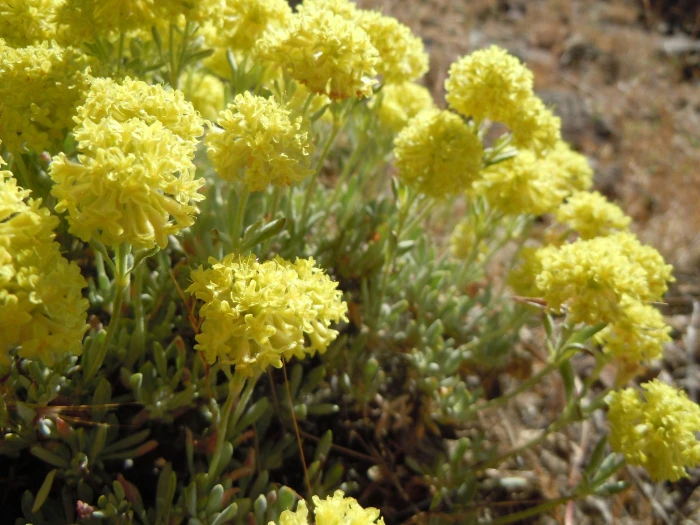Douglas’ Buckwheat
(Eriogonum douglasii)
Douglas’ Buckwheat (Eriogonum douglasii)
/
/

Matt Lavin
CC BY 4.0
Image By:
Matt Lavin
Recorded By:
Copyright:
CC BY 4.0
Copyright Notice:
Photo by: Matt Lavin | License Type: CC BY 4.0 | License URL: http://creativecommons.org/licenses/by/4.0/ | Rights Holder: Matt Lavin | Publisher: iNaturalist | Date Created: 2011-07-08T08:41:28-07:00 |

























Estimated Native Range
Climate Requirements for Springfield, Virginia
| This Plant | Your Site | Plant Suitability for Your Location | ||
|---|---|---|---|---|
| • Precipitation | 7" - 68" | 41" | Aquatic | Aquatic |
| • High Temp. | 68°F - 99°F | 88°F | Your summer temperatures are normal for this plant. | Excellent |
| • Low Temp. | 9°F - 38°F | 25°F | Your winter temperatures are normal for this plant | Excellent |
This plant may not grow well at your location - your precipitation is too high.
Summary
Eriogonum douglasii, commonly known as Douglas’ buckwheat, is a perennial herb native to the western United States, particularly found in the Great Basin and the Pacific Northwest. It thrives in arid environments, including grasslands, sagebrush flats, and open pine forests at moderate elevations. This species is well-adapted to dry, rocky soils and is often seen in open, sunny areas. Douglas’ buckwheat typically forms a low, mat-like clump of foliage around a woody base (caudex), with lance-shaped to oval leaves that are densely covered in woolly hairs, giving them a silver-gray appearance. The plant reaches up to 6 inches in height and produces an erect, solid stem that bears a headlike cluster of flowers. The blooms can vary in color from cream to yellow or rose-pink and are known for their attractiveness to pollinators, particularly butterflies.
Douglas’ buckwheat is valued for its drought tolerance and ability to thrive in poor soils, making it an excellent choice for xeriscaping and rock gardens. Its showy flowers and distinctive foliage add texture and color to landscapes. It is also used in restoration projects to stabilize soils and support native pollinators. For cultivation, it requires minimal water once established, well-drained soils, and full sun exposure. While generally low-maintenance, it can be susceptible to root rot if overwatered or planted in poorly drained soils. There are no widely known cultivars, but its natural variability offers a range of subtle color differences in the flowers.CC BY-SA 4.0
Douglas’ buckwheat is valued for its drought tolerance and ability to thrive in poor soils, making it an excellent choice for xeriscaping and rock gardens. Its showy flowers and distinctive foliage add texture and color to landscapes. It is also used in restoration projects to stabilize soils and support native pollinators. For cultivation, it requires minimal water once established, well-drained soils, and full sun exposure. While generally low-maintenance, it can be susceptible to root rot if overwatered or planted in poorly drained soils. There are no widely known cultivars, but its natural variability offers a range of subtle color differences in the flowers.CC BY-SA 4.0
Plant Description
- Plant Type: Shrub, Herb
- Height: 1-3 feet
- Width: 1-3 feet
- Growth Rate: Moderate
- Flower Color: Pink, White, Yellow
- Flowering Season: Spring, Summer
- Leaf Retention: Deciduous
Growth Requirements
- Sun: Full Sun, Part Shade
- Water: Low
- Drainage: Fast, Medium
Common Uses
Drought Tolerant, Low Maintenance, Rock Garden, Showy Flowers
Natural Habitat
Arid environments, including grasslands, sagebrush flats, and open pine forests at moderate elevations
Other Names
Common Names: Douglas’s Wild Buckwheat
Scientific Names: Eriogonum douglasii, Eriogonum caespitosum subsp. douglasii, Eriogonum caespitosum var. douglasii, Eriogonum ovalifolium
GBIF Accepted Name: Eriogonum douglasii